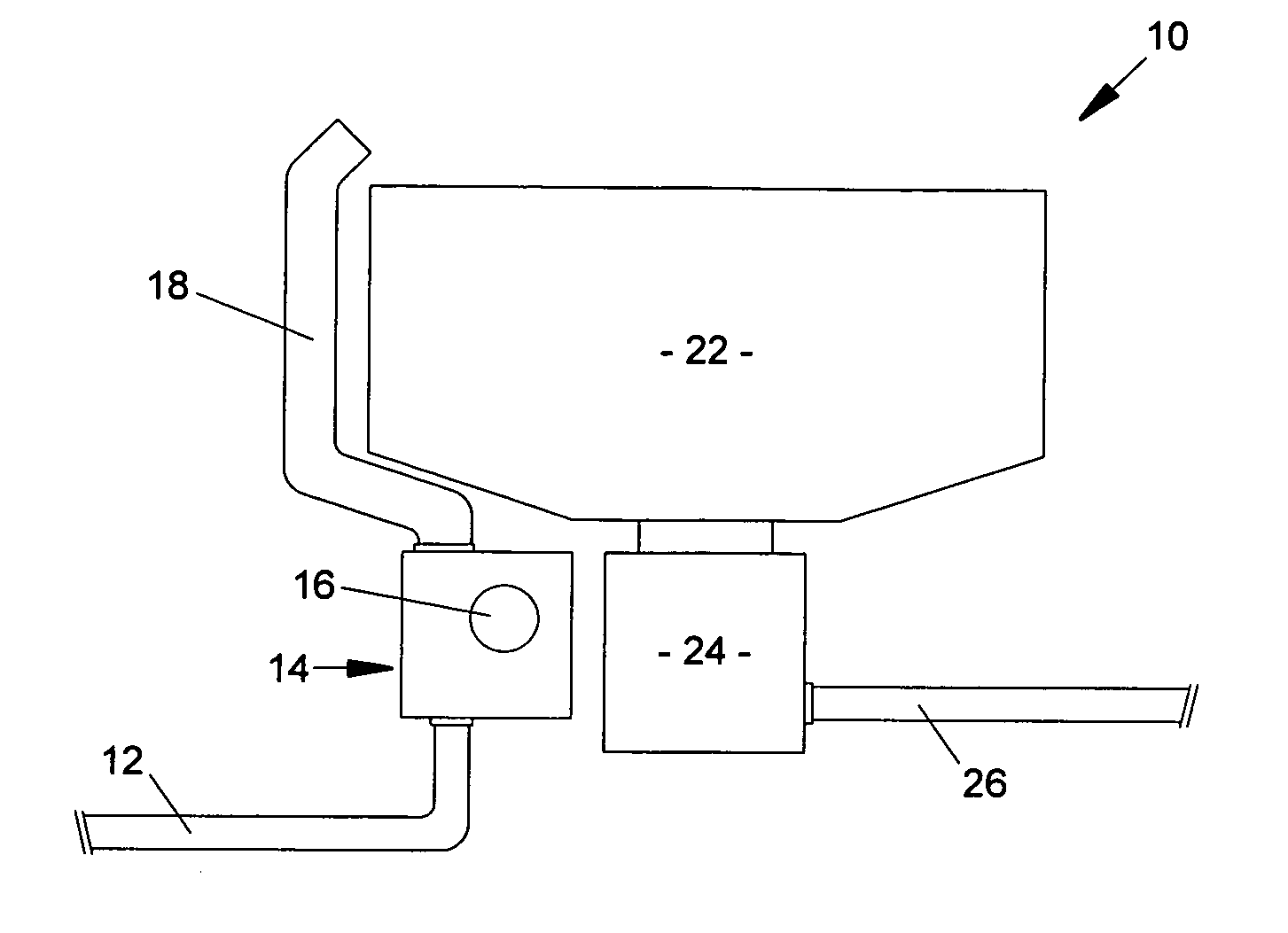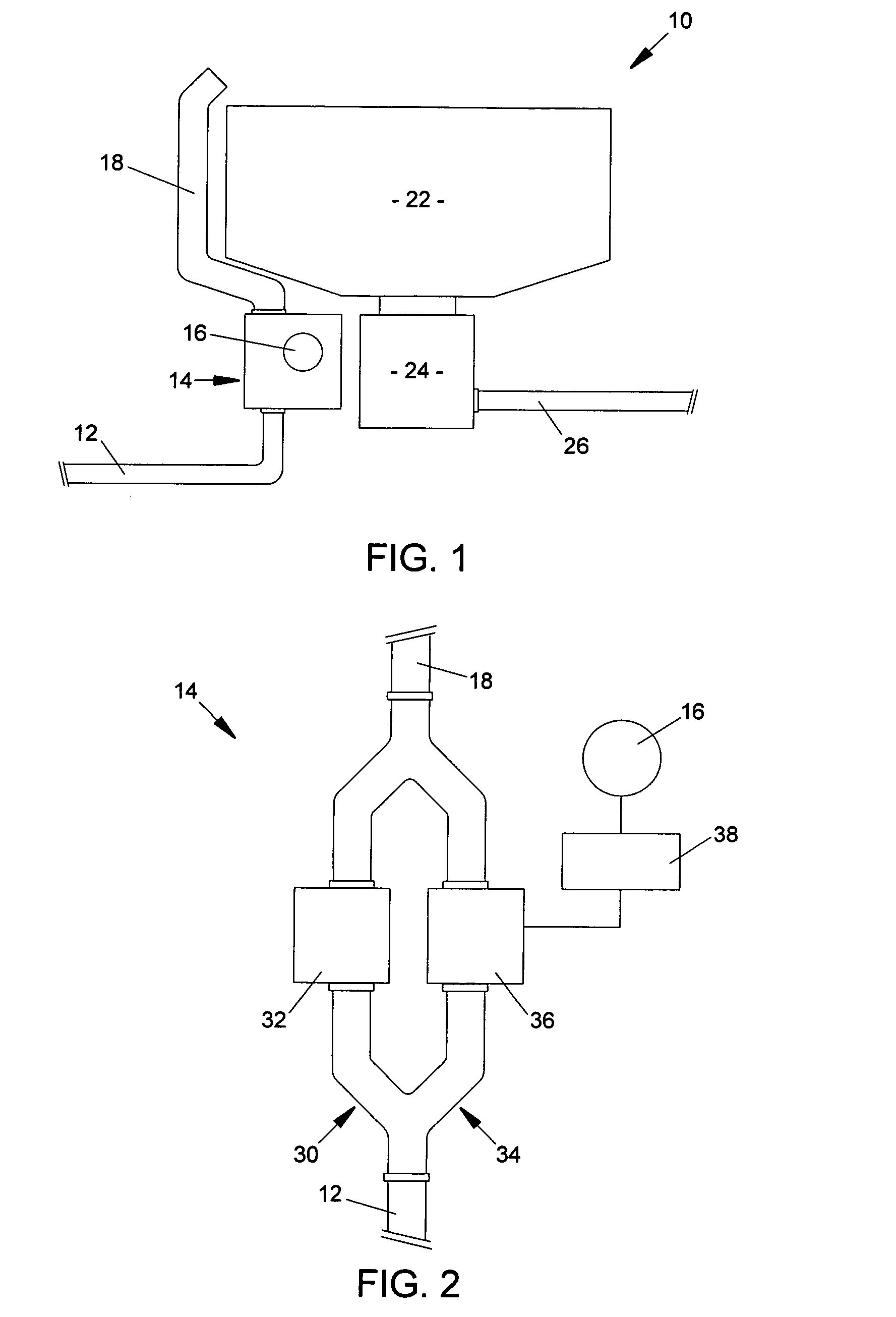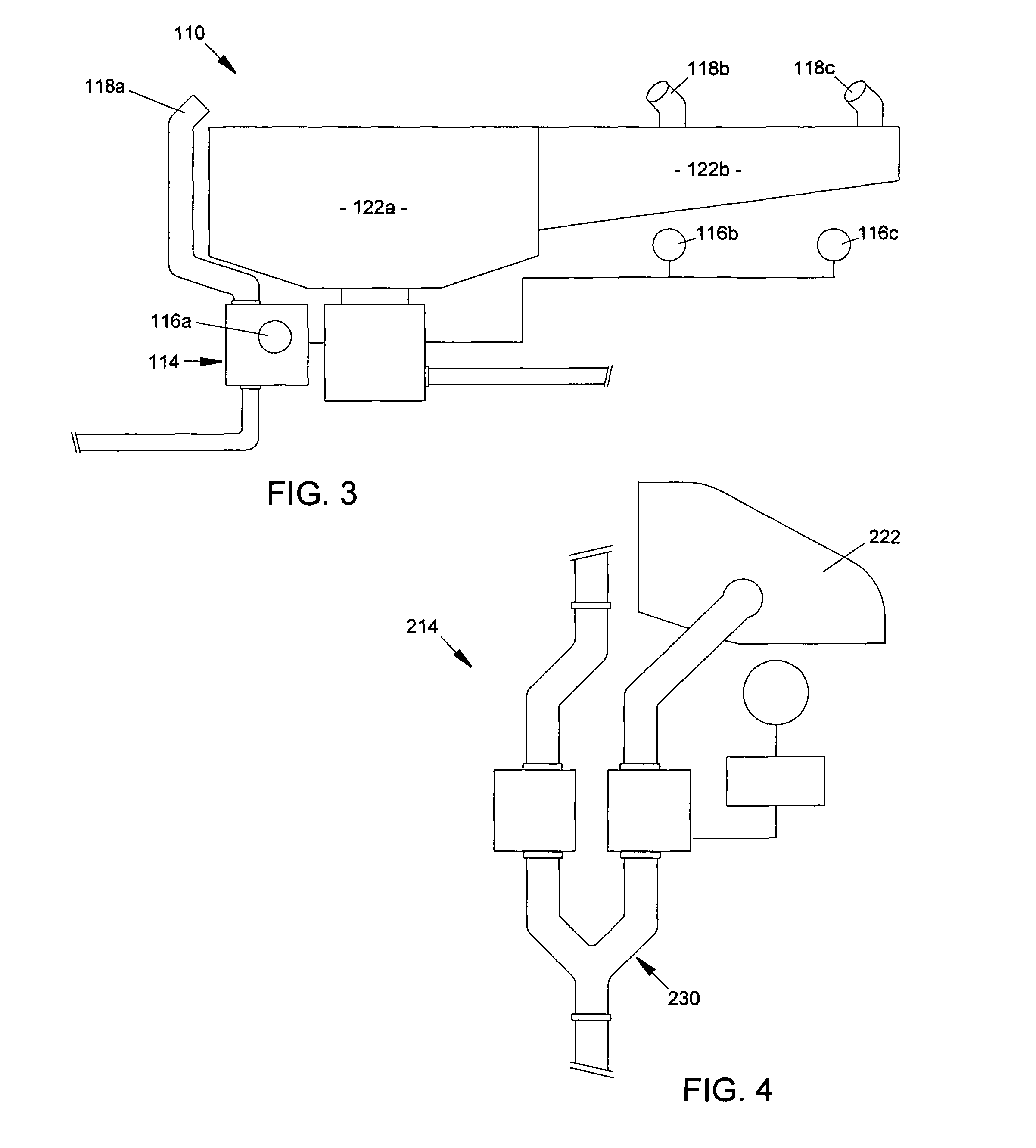System and method for controlling water flow in a food waste handling system
a technology of food waste and water flow, which is applied in the direction of gas current separation, grain treatment, cleaning using liquids, etc., can solve the problems of not ensuring that ground or shredded food waste is adequately flushed into and through the connected sanitary sewer system, and ensuring the flow of water flow, so as to facilitate the on-going handling process, facilitate the minimizing of overall water use, and maximize the flow rate
- Summary
- Abstract
- Description
- Claims
- Application Information
AI Technical Summary
Benefits of technology
Problems solved by technology
Method used
Image
Examples
first embodiment
[0014]FIG. 1 is a high-level system diagram of a simple exemplary single-operator food waste handling system incorporating a preferred first embodiment of the control system of the present invention;
[0015]FIG. 2 is a detailed block diagram of the preferred first embodiment of the control system shown in FIG. 1;
second embodiment
[0016]FIG. 3 is a high-level system diagram of a simple exemplary multi-operator trough-type food waste system incorporating a preferred second embodiment of the control system of the present invention;
third embodiment
[0017]FIG. 4 is a detailed block diagram of a preferred third embodiment of the control system of the present invention;
PUM
 Login to View More
Login to View More Abstract
Description
Claims
Application Information
 Login to View More
Login to View More - R&D
- Intellectual Property
- Life Sciences
- Materials
- Tech Scout
- Unparalleled Data Quality
- Higher Quality Content
- 60% Fewer Hallucinations
Browse by: Latest US Patents, China's latest patents, Technical Efficacy Thesaurus, Application Domain, Technology Topic, Popular Technical Reports.
© 2025 PatSnap. All rights reserved.Legal|Privacy policy|Modern Slavery Act Transparency Statement|Sitemap|About US| Contact US: help@patsnap.com



